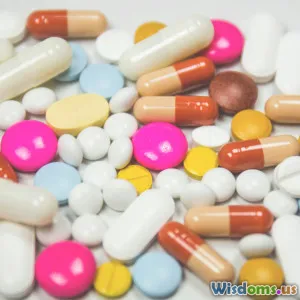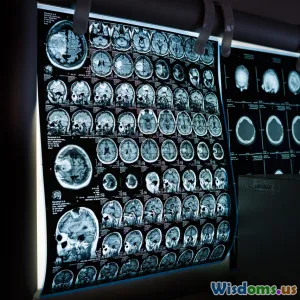
Unlocking Stem Cell Therapies Promise And Current Challenges
9 min read Exploring the transformative potential and hurdles of stem cell therapies reshaping modern medicine. (0 Reviews)
Unlocking Stem Cell Therapies' Promise and Current Challenges
Stem cell therapies stand on the frontier of regenerative medicine, representing an extraordinary leap toward healing damaged tissues and combating some of the most stubborn medical conditions. The excitement they generate is palpable: the promise that a simple injection of stem cells could replace damaged heart tissue, restore mobility after spinal cord injury, or reverse the ravages of neurodegenerative diseases captures the imagination of scientists, clinicians, and patients alike.
Yet, as with all revolutionary advances, stem cell therapies face significant scientific, regulatory, and ethical hurdles before widespread clinical application becomes feasible. This article explores the expansive promise of stem cell technologies, their remarkable real-world breakthroughs, and the key challenges that must be overcome to unlock their full potential.
Understanding Stem Cells: The Foundation of Regenerative Medicine
Stem cells are unique for their dual abilities: to self-renew indefinitely and to differentiate into specialized cell types. Broadly categorized, they include:
- Embryonic Stem Cells (ESCs): Derived from early-stage embryos, ESCs are pluripotent, capable of forming any cell type, but raise ethical debates due to embryo use.
- Adult Stem Cells: Found in various tissues (e.g., bone marrow, adipose tissue), these multipotent cells have a more limited differentiation range but fewer ethical concerns.
- Induced Pluripotent Stem Cells (iPSCs): Adult cells genetically reprogrammed to a pluripotent state, combining developmental potential with fewer ethical issues and personalized medicine applications.
These versatile cells are the foundation for therapies aimed at regenerating damaged cells or tissues and tackling diseases where conventional treatments often fall short.
The Transformative Promise of Stem Cell Therapies
Regenerating Damaged Organs and Tissues
Cardiovascular diseases remain the leading cause of death globally. After a myocardial infarction, heart muscle cells die and are replaced by scar tissue, diminishing cardiac function. Stem cell therapies offer hope by potentially regenerating functional myocardium.
Clinical trials exploring bone marrow-derived stem cells for repairing cardiac tissue have demonstrated modest improvements in heart function. For instance, a 2015 study published in The Journal of the American College of Cardiology reported a significant 6% increase in ejection fraction in patients receiving stem cell transplants.
Neurological Disorders
Diseases such as Parkinson’s and multiple sclerosis cause progressive neuron loss, currently irreversible by standard treatments. Stem cells, especially iPSCs programmed to replace dopamine-producing neurons, have shown promising results in preclinical models.
One notable example is the work by the University of Kyoto, where dopamine neurons derived from iPSCs were transplanted into Parkinsonian monkeys, restoring motor function. Human clinical trials, initiated in Japan, are already underway, reflecting crucial translational steps.
Treating Blood Disorders and Immune Diseases
Stem cell transplantation is a well-established treatment for hematologic malignancies. Bone marrow transplants replenish the entire blood system, often curing conditions like leukemia or lymphoma.
Emerging gene-editing techniques combined with stem cell transplantation hold potential to cure inherited disorders like sickle cell anemia and thalassemia by correcting genetic defects in patient-derived stem cells before reinfusion.
Addressing Diabetes and Liver Diseases
Generating insulin-producing beta cells from stem cells offers a potential cure for type 1 diabetes. Trials by ViaCyte and Vertex Pharmaceuticals have begun testing stem cell-derived pancreatic cells in humans, aiming to reduce or eliminate daily insulin injections.
Similarly, liver failure therapies based on differentiating stem cells into hepatocytes represent a possible bridge to transplantation or even complete regeneration.
Real-World Applications and Success Stories
- Strimvelis: The first ex vivo stem cell gene therapy approved by the European Medicines Agency to treat ADA-SCID, a severe immunodeficiency disease, exemplifies translating stem cells into curative treatments.
- Holoclar: A stem cell-based therapy approved to regenerate corneal cells in patients with limbal stem cell deficiency brought hope for blindness restoration.
These successes not only validate stem cell therapy’s viability but also pave the regulatory and commercial pathway for future applications.
Major Challenges in Unlocking Full Potential
Scientific Hurdles
- Cell Differentiation and Purity: Controlling stem cell differentiation precisely is challenging, with risks of undifferentiated cells causing tumors.
- Immune Rejection: Despite progress, potential immune responses against transplanted cells remain concerns, especially with allogeneic sources.
- Scalability: Manufacturing sufficient high-quality stem cells under Good Manufacturing Practices (GMP) for widespread treatments is complex and costly.
Safety and Long-term Effects
Though clinical trials have shown encouraging safety data, long-term monitoring is critical. Cases of unintended cell growth or immune complications underline the need for vigilant oversight.
Ethical and Regulatory Landscape
Escalating ethical debates revolve around embryonic stem cells, the use of gene editing technologies like CRISPR in germline cells, and equitable patient access. Regulatory organizations such as the FDA and EMA require rigorous evidence and standardized protocols, which can slow innovation but protect patients.
Economic and Accessibility Barriers
Currently, stem cell therapies are expensive, often limiting accessibility. Developing cost-effective production methods and insurance coverage frameworks is necessary for widespread adoption.
The Road Ahead: Emerging Innovations and Collaborative Efforts
Advances in Gene Editing
The combination of gene editing with stem cells enables precise correction of genetic diseases, circumventing graft-versus-host disease and rejection. Tools like CRISPR-Cas9 accelerate these possibilities.
3D Bioprinting and Organoids
Novel 3D bioprinting technologies allow engineering complex tissues from stem cells, potentially creating transplantable organs in the future.
Global Collaborative Networks
Initiatives like the International Society for Stem Cell Research (ISSCR) promote ethical guidelines, data sharing, and accelerate clinical translation.
Personalized Medicine
Patient-specific iPSCs open personalized therapeutic avenues, minimizing rejection and tailoring disease models for drug development.
Conclusion
Stem cell therapies encapsulate one of medicine’s most thrilling frontiers, with the potential to transform patient outcomes across a spectrum of diseases currently considered incurable. The impressive milestones reached, such as clinical stage trials in neurodegeneration and approved treatments for rare diseases, underscore a remarkable trajectory.
However, unlocking this promise demands an unwavering commitment to overcoming biological complexity, ensuring patient safety, navigating ethical landscapes, and balancing innovation with regulation. The path ahead calls for multidisciplinary collaboration among scientists, clinicians, ethicists, regulators, and patients.
In embracing these challenges, stem cell therapies represent not just a scientific advance but a profound opportunity—a future where the body’s untapped regenerative powers are harnessed to heal, restore, and renew human life itself. The promise is immense; the journey to realization, ongoing and compelling.
References and Further Reading:
- Trounson, A., & McDonald, C. (2015). Stem Cell Therapies in Clinical Trials: Progress and Challenges. Cell Stem Cell, 17(1), 11-22.
- Lindvall, O., & Kokaia, Z. (2010). Stem cells in human neurodegenerative disorders—time for clinical translation? The Journal of Clinical Investigation, 120(1), 29-40.
- European Medicines Agency. (2016). Strimvelis: Stem Cell Gene Therapy for ADA-SCID.
- ViaCyte Inc. Clinical Trial: PEC-Direct for type 1 diabetes (NCT03163511).
�
Rate the Post
User Reviews
Other posts in Life Sciences
Popular Posts















